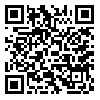The aim of the present study was to determine the relationship between a repulsion molecular marker with resistance to rhizomania in infested field condition and virus concentration in sugar beet root (ELISA absorbance values). For this purpose, the genotypes were planted in infested area of Shiraz in the randomized block design with four replications. At the end of the season, the roots were harvested and root disease scores were assigned for each plot and also for three single roots per plot for 16 selected genotypes. Also, leaf and root samples were taken from the plants and then in laboratory, root samples were extracted and tested by ELISA method and DNA extraction was done on leaf samples for molecular analysis. In next step, primer related to a repulsion marker was tested on single plants DNAs by RAPD-PCR method and scored according to presence and absence of marker band. Then, analysis of variance, genotypes grouping and cluster analysis were done for field resistance and ELISA data. The genotypes were classified into some groups based on ELISA absorbance values and root severity index in the field and also based on cluster analysis were classified into four groups: resistant, semi resistant, semi susceptible and very susceptible. Then, the relationship between the results of the marker, ELISA and severity of root infection in the field were investigated as pairwise comparison. The results showed that agreements between the marker and ELISA, the marker and field resistance and ELISA and field resistance were 85, 86 and 80 percent respectively. In totally, molecular marker, ELISA and field data confirmed each other.
Received: 2016/09/7 | Accepted: 2016/09/7 | Published: 2016/09/7
| Rights and permissions | |
 |
This work is licensed under a Creative Commons Attribution-NonCommercial 4.0 International License. |


